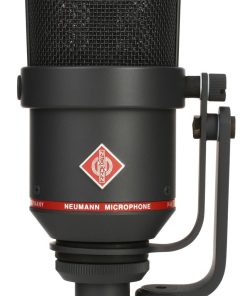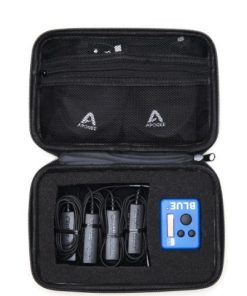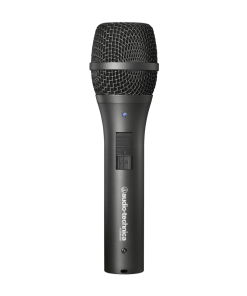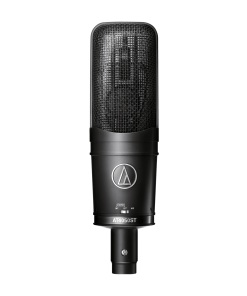Neumann TLM 170 R MT Large Diaphragm Microphone – Black Neumann
$ 3.295,00 $ 823,75
The first Neumann mic with transformerless technology, featuring 5 directional characteristics, selectable at the mic or remotely, in addition to pre-attenuation and low-cut filter switches. The excellent sound pressure handling capability makes this mic ideal for recording wind instruments, for example.
Five directional characteristics are selectable by means of a rotary switch. In the sixth position, marked “R”, the directional patterns can be controlled remotely with the N 248 power supply. There is no special cable necessary for this purpose.
The microphone has at its rear a 10 dB attenuation switch for extremely high sound pressure levels, and a high-pass filter to suppress structure born noise.
The TLM 170 R condenser microphone is a large diaphragm microphone with multiple polar patterns. Its sound has a very transparent characteristic, in contrast to some of our other microphones that have a distinct personality.
Therefore, this microphone is used for many diverse applications in professional recording studios, in broadcasting, film and television, and for semiprofessional productions. The polar patterns can be selected either at the microphone itself, or controlled remotely through the special N 248 power supply.
The microphone is addressed from the front, marked with the Neumann logo. The large diaphragm capsule inside the headgrille has a very smooth frequency response for all polar patterns over a wide acceptance angle. The curves are flat and parallel to the 0° frequency curve up to 10 kHz within an angle of ± 100°.
As a result the TLM 170 R has a very even diffuse-field response for all polar patterns. This is important in a reverberant environment, as more reflections arrive at the microphone from different directions. The acoustic information is not affected in its tonal quality when recorded by the microphone. This characteristic is achieved without resorting to corrective resonance effects.
Therefore, the microphone maintains an excellent impulse response reproducing all transient phenomena of music and speech without any coloration. The capsule is elastically mounted to avoid any structure borne noise that could interfere with its operation.
In addition to the usual directional polar patterns: omnidirectional, cardioid, and figure-8, we have added a hypercardioid and wide-angle cardioid characteristic. When compared to the standard cardioid pattern, the hypercardioid characteristic suppresses sound from the side more efficiently. The wide-angle polar pattern is especially useful to record large sound sources.
The N 248 controls the polar pattern remotely by varying the phantom voltage. The range is ± 3 V of the nominal 48 V value. (According to DIN standard a range of ± 4 V is permissible.)
The rotary switch on the microphone must be in the position R (= remote control). In this switch position the TLM 170 R microphone analyses the absolute value of the phantom power and selects the corresponding polar pattern. A standard 3-pin microphone cable is used, similar to the microphone’s conventional operation. Cable lengths may be up to 300 m (1000 feet).
The letters TLM stand for “transformerless microphone”. With TLM technology the usual output transformer is replaced by an electronic circuit. As with traditional transformers, it ensures good common mode rejection, and prevents RF interference, that may influence the balanced audio signal.
The TLM 170 R is provided with a tilting side bracket to attach the microphone to booms or stands. The bracket is equipped with rubber elements that effectively protect the microphone from mechanical shock. If necessary, it can be mounted on the other side of the microphone as well.
When using the IC 4 cable (for example to suspend the microphone from the ceiling with the MNV 87 auditorium hanger), the bracket and its holder need to be removed. The microphone can then be connected to the swivel mount connector of the cable.
The TLM 170 R microphone has a 10 dB attenuation switch to prevent the input of the following unit from being overloaded. A second switch at the rear allows to attenuate the frequency response below 100 Hz to suppress undesired structure borne noise.
All exposed surfaces of the capsule, including the diaphragms, are at ground potential. This technology makes them highly immune to electrical and atmospheric interference and contamination through dust particles.
- Local and remote controlled large diaphragm microphone
- Pressure-gradient transducer with double membrane capsule
- Five directional characteristics: omni, wide angle cardioid, cardioid, hypercardioid, figure-8
- Patented circuitry for remote and local switching of directional characteristics
- Switchable low frequency roll-off and 10 dB preattenuation
- Tiltable, elastically suspended bracket mount
Prompt Delivery and Professional Packaging
Our long-standing partnership with UPS FedEx DHL and other global carriers lets us offer a range of shipping services. Our warehouse staff is extremely skilled and will package your items according to our precise and exact specifications. Your goods will undergo an extensive inspection and be safely packaged prior to being sent out. Each day, we ship to thousands of customers in many countries. The fact that we are committed to becoming the biggest online retailer in the World is clear. These warehouses are in Europe in the same way as they are in USA.
Note: Orders that include more than one item are assigned a processing period depending on the item.
Before shipping, we will inspect thoroughly the items you have ordered. Most orders are shipped within 48 hours. Expected delivery time is between 3-7 days.
Returns
Stock is dynamic. It's not entirely managed by us since we are involved with multiple entities, including the factory and the storage. The actual stock can change at any moment. It is possible that your order may be out of stock once the order has been placed.
Our policy lasts for 30 days. We cannot exchange or refund your order if it has been 30 days from the date of purchase.
For your item to be returned it must be in its original packaging, unopened and in the condition you received it. The item must be in its original packaging.
Related products
Microphones
Microphones
Microphones
Microphones
Microphones
Microphones
Microphones
































































